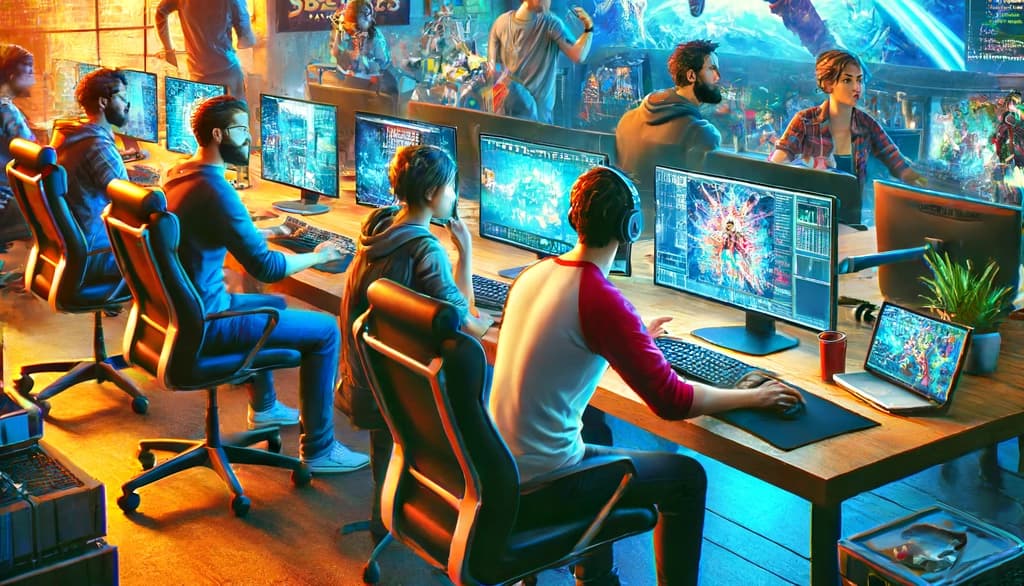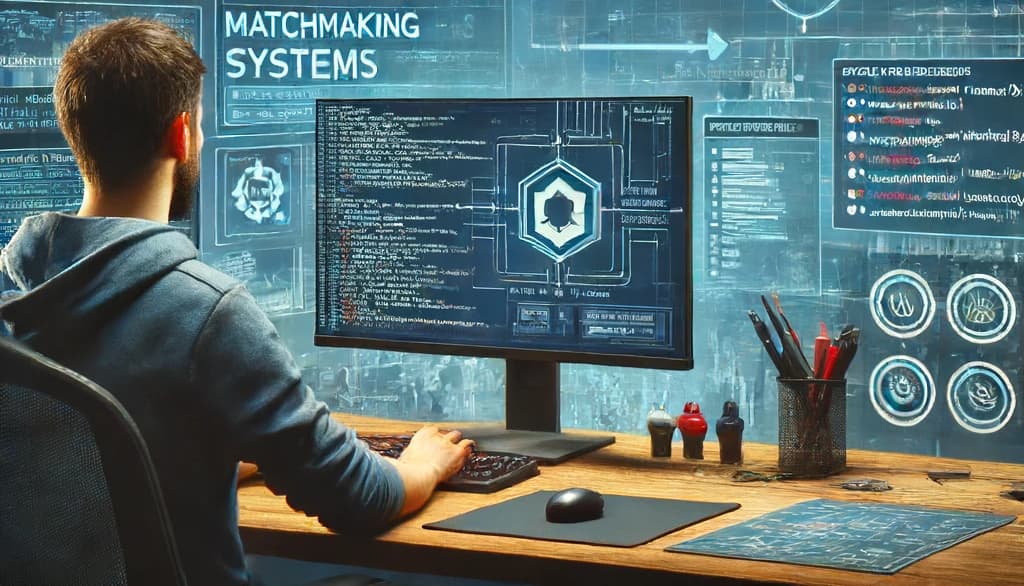
The landscape of multiplayer game development is constantly evolving, offering exciting opportunities for game developers to create engaging experiences for players. With the right strategies, developers can craft games that not only attract players but also keep them coming back for more.
In this comprehensive guide, we will delve into the essential strategies for building compelling multiplayer games. From designing gameplay mechanics to ensuring server stability, we will cover all the critical aspects that contribute to creating successful multiplayer experiences.
Understanding the Basics of Multiplayer Game Development
Multiplayer game development involves creating games that allow multiple players to interact in a shared environment. This requires a solid understanding of network architecture, synchronization, and real-time communication. Developers must ensure that the game’s infrastructure can handle the demands of multiple players simultaneously.
One of the fundamental challenges in multiplayer game development is ensuring a seamless experience for all players. This involves managing latency, handling player inputs, and synchronizing game states. A deep understanding of these basics is crucial for any developer looking to create successful multiplayer games.
Designing Compelling Gameplay Mechanics
At the heart of any engaging multiplayer game are its gameplay mechanics. These mechanics must be designed to be fun, fair, and engaging for all players. This includes creating balanced game rules, interesting challenges, and rewarding progression systems. Players should feel a sense of achievement and enjoyment as they play.
In addition to being enjoyable, the gameplay mechanics should also encourage social interaction and cooperation among players. This can be achieved through team-based objectives, competitive elements, and social features that promote communication and collaboration.
Creating a Balanced and Fair Gaming Environment
A fair and balanced gaming environment is essential for maintaining player satisfaction and retention. Developers must ensure that no player has an unfair advantage over others. This involves careful balancing of in-game items, character abilities, and progression systems.
Regular updates and patches are necessary to address any imbalances that may arise. By listening to player feedback and monitoring in-game data, developers can make informed decisions to keep the game fair and enjoyable for all players.
Optimizing Network Performance for Seamless Play
Network performance plays a critical role in the success of multiplayer games. High latency and lag can significantly detract from the player experience. Developers must optimize their game’s network code to ensure low latency, fast response times, and minimal packet loss.
Implementing techniques such as client-side prediction, lag compensation, and efficient data compression can help improve network performance. Additionally, using dedicated servers and distributed server architecture can further enhance the stability and reliability of the multiplayer experience.
Implementing Effective Matchmaking Systems
Matchmaking systems are responsible for pairing players of similar skill levels and preferences. An effective matchmaking system can enhance player satisfaction by providing balanced and competitive matches. Developers should consider factors such as player skill, latency, and preferences when designing their matchmaking algorithms.
Utilizing machine learning and data analytics can help improve the accuracy and efficiency of matchmaking systems. By continuously refining these systems, developers can ensure that players have a positive and engaging multiplayer experience.

Ensuring Scalability and Stability of Multiplayer Servers
Scalability and stability are crucial for the long-term success of multiplayer games. As the player base grows, the game’s servers must be able to handle the increased load. This requires careful planning and implementation of scalable server architectures.
Developers should employ techniques such as load balancing, server clustering, and cloud-based solutions to ensure their servers can handle high traffic. Regular stress testing and performance monitoring are also essential to maintain server stability and prevent downtime.
Integrating Social Features to Enhance Player Interaction
Social features can significantly enhance the multiplayer experience by fostering a sense of community and connection among players. Features such as friend lists, chat systems, and social media integration can help players connect and interact with each other.
Incorporating social features also allows players to share their achievements, invite friends to play, and participate in community events. By creating a vibrant and interactive community, developers can increase player engagement and retention.
Utilizing Data Analytics to Improve Player Experience
Data analytics can provide valuable insights into player behavior and preferences. By analyzing in-game data, developers can identify areas for improvement and make data-driven decisions to enhance the player experience. This includes optimizing gameplay mechanics, balancing difficulty levels, and personalizing content.
Implementing analytics tools and dashboards can help developers track key performance indicators (KPIs) and monitor player feedback. Regular analysis of this data can lead to continuous improvements and a better overall gaming experience for players.
Addressing Security Concerns in Multiplayer Games
Security is a critical concern in multiplayer games, as players’ personal information and in-game assets must be protected from malicious attacks. Developers must implement robust security measures to prevent hacking, cheating, and data breaches.
Utilizing encryption, secure authentication methods, and regular security audits can help safeguard player data. Additionally, implementing anti-cheat systems and monitoring for suspicious activity can help maintain a fair and secure gaming environment.
Monetization Strategies for Multiplayer Games
Monetization is an important aspect of multiplayer game development, allowing developers to generate revenue from their games. Popular monetization strategies include in-app purchases, subscription models, and advertising. Developers should carefully consider which strategies align with their game’s design and player base.
Implementing fair and non-intrusive monetization methods can enhance player satisfaction and retention. Offering cosmetic items, premium memberships, and ad-free experiences are common ways to monetize multiplayer games without negatively impacting gameplay.

Testing and Quality Assurance for Multiplayer Environments
Testing and quality assurance (QA) are essential for ensuring a smooth and enjoyable multiplayer experience. Developers must conduct extensive testing to identify and fix bugs, glitches, and performance issues. This includes both automated testing and manual playtesting.
Regular QA cycles, including beta testing with real players, can help uncover issues that may not be apparent during development. By addressing these issues before launch, developers can provide a polished and stable multiplayer experience.
Future Trends in Multiplayer Game Development
The future of multiplayer game development is filled with exciting possibilities. Emerging technologies such as virtual reality (VR), augmented reality (AR), and cloud gaming are set to revolutionize the way players interact and experience games.
Developers should stay informed about these trends and consider how they can be integrated into their games. By embracing new technologies and innovations, developers can create cutting-edge multiplayer experiences that captivate and engage players.
Case Studies of Successful Multiplayer Games
Examining case studies of successful multiplayer games can provide valuable insights and inspiration for developers. Games such as “Fortnite,” “Among Us,” and “League of Legends” have set benchmarks in the industry with their innovative gameplay, community engagement, and monetization strategies.
By analyzing these case studies, developers can learn from the successes and challenges of others, applying these lessons to their own projects. Understanding what makes these games successful can help developers create their own hit multiplayer experiences.